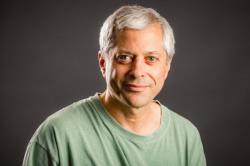Volunteer computing for climate science, sustainable development and human health
University of Geneva
Session 215
As major corporations compete to establish the large-scale computing infrastructures necessary for the rapidly evolving field of generative AI, a huge public resource is being overlooked: volunteer computing. BOINC, the Berkeley Open Infrastructure for Network Computing, is a middleware that has connected millions of citizens and their computers with hundreds of researchers to tackle a vast range of computational challenges across the sciences over the past 20 years, using volunteer computing. In this panel, experts will discuss how BOINC has contributed to major advances in the areas of climate change modelling and disease control, amongst others. They will emphasize the economic and environmental advantages of such volunteered computing resources, compared to building and running dedicated data centers. The panel will also discuss the future of volunteer computing, exploring ways to expand the scope of what this form of citizen science can achieve, in particular in the area of Artificial Intelligence.

David Wallom is a Professor in Informatics and Associate Director – Innovation of the Oxford e-Research Centre, where he leads two separate research groups, Energy and Environmental ICT, and Advanced e-infrastructure & Cloud Computing.
He has led over 55 research projects in areas such as Cloud utilisation, Cybersecurity, Smart Energy Grids, Research Data Management, Green IT, ICT Security and Institutional Repositories. He is a member of the GCHQ recognized Academic Centre of Excellence in Cyber Security and the UK Space Agency Ground segment Advisory Group.
David is the academic Board Member of the HEFCE Institute for Environmental Analytics, Chair of the Scientific Advisory Board for the Norweigan Information for Action e-Science Centre and a member of the SAB for the NEGI Tools for Investigating Climate Change at High Northern Latitudes (eSTICC) & Ensemble-based Methods for Environmental Monitoring and Prediction (EmblA) centres. He is also Co-Editor in Chief of the Elsevier journal SoftwareX.

Ana Lucia Varbanescu is professor at the University of Twente, The Netherlands. She holds a BSc and MSc in Computer Science and Engineering from POLITEHNICA University in Bucharest, Romania, and a PhD in Computer Science from TUDelft. She was an intern at IBM TJWatson Research and at NVIDIA, and a visiting researcher at Imperial College London, Barcelona Supercomputing Center, and University of Valladolid, Spain.
Ana's research stems from HPC, and investigates the use of heterogeneous systems for high-performance applications, with a special focus on performance and energy efficiency modeling for both scientific and data-intensive applications. Her latest research focuses on zero-waste computing and model-based systems co-design in the computing continuum.

Dr. Segal enabled the Web’s development by coordinating TCP/IP’s adoption within the European Organization for Nuclear Research (CERN) from 1984 to late 1988, when CERN changed its Internet policy. For CERN’s Internet developers, he was their first introduction to the IP stack and the Berkeley socket Application Programming Interface.
He played an important role as an Internet promoter, spearheading the introduction of IP into a hostile Europe when it was not politically correct or career-friendly to do so there. European Postal Telegraph and Telecommunications Administrations and industry were opposed to these standards, and their use outside the laboratory was forbidden.
Segal began working on early data communications at CERN in 1971, but it was in 1977, on a sabbatical in Palo Alto, that he first encountered both the ARPAnet and Unix. Back at CERN, working on a satellite system linking European physics labs and interconnecting some networks with an Internet protocol, he saw that TCP/IP protocols could connect CERN’s own heterogeneous computer systems. He helped Tim Berners-Lee, who went on to invent the World Wide Web, with design decisions and pointed him to the RFC series and existing protocols like the File Transfer Protocol and Network News Transfer Protocol, which could guide his invention of the Hypertext Transfer Protocol. Segal also developed code such as legacy-to-Internet gateways to help protocol transitions and introduced the Berkeley socket.
From 1986 Ben Segal taught courses on Internet protocols, Unix and distributed computing in Europe, Asia and South America.

Matthew Blumberg has been working in the fields of network computing and large scale collaboration for 15 years. He is Executive Director of GridRepublic and Co-Founder of Charity Engine, two large-scale distributed computing services. Past projects include work as Fellow at Harvard's MetaLAB; Visiting Fellow at the Laboratory for Innovation Science at Harvard (LISH); Section Editor of "The Handbook of Human Computation"; Consultant to DARPA’s “Social Computing Seedling”; and Partner in TGT Energy, an industrial-scale energy storage venture.

Polina Sokolova is a student of the University of Geneva's Masters in Innovation, Human Development and Sustainability, and is currently doing an internship with the ITU WSIS team. As 31 May is the WSIS Youth Day, she represents students and young people in this panel. Polina has a background in cybersecurity and legal regulation of IT and is interested in digital sustainability issues.
-
 C7. ICT applications: benefits in all aspects of life — E-science
C7. ICT applications: benefits in all aspects of life — E-science
-
 Goal 9: Build resilient infrastructure, promote sustainable industrialization and foster innovation
Goal 9: Build resilient infrastructure, promote sustainable industrialization and foster innovation
https://boinc.berkeley.edu
https://en.wikipedia.org/wiki/Berkeley_Open_Infrastructure_for_Network_Computing
https://en.wikipedia.org/wiki/Climateprediction.net
https://en.wikipedia.org/wiki/Malaria_Control_ProjectPlease
https://en.wikipedia.org/wiki/LHC@home